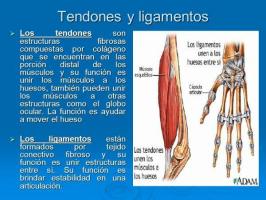3 differences between HOMOLOGOUS and ANALOGUE organs

The comparative anatomy It is a branch of science that is responsible for studying or comparing the differences and similarities of organs and structures in different living beings. This science has been of great help to demonstrate the relationship of species in the history of evolution. Comparative anatomy is responsible for studying homologous and analogous organs of different living beings. In this lesson from a Teacher we tell you the differences between homologous and analogous organs.
Index
- What are homologous organs? Examples
- What are analogous organs? Examples
- What are the differences between homologous and analogous organs?
- Examples of homologous and analogous organs
What are homologous organs? Examples.
Before getting to know the differences between homologous and analogous organs, it is important that we know both terms well.
The homologous organs are those who own the same internal structure, but Its external form and function are different
s. Homologous organs are evidence that the species have a common ancestor, the adaptation of these species to The different forms of life caused these changes in the external form or function of the organs, this is known as evolutionary divergence.Examples of homologous organs
Let's see it with an example: the arm of a human being, the leg of a dog, the fin of a dolphin and the wing of a bird They are the extremities of various living beings and have in common some internal structures such as bones, joints and muscles that support them. they make up, but on the outside they are very different, although they all serve for locomotion, each one has a different peculiarity, the upper extremity of the human beings are used to grasp objects, dogs' legs are adapted for running, dolphins' fins are used for swimming, and birds' wings to fly.

What are analogous organs? Examples.
The analogous organs, they are also known by the name of homoplastic, have the same function in different living beings, but differ in their structure and do not have the same origin, They do not have a common ancestor. In this case, according to the theory of evolution, those species that have a similar lifestyle and are subjected to similar environmental adaptation processes, They can evolve independently to similar structures and this process is known as convergence. evolutionary.
Examples of analogous organs
For example, the wings of different species of living beings. Living beings that are adapted to flight have wings, but if we compare the wings of an insect with those of a bird or a bat, we will notice that they have different structures and shapes, even if they comply with the same function.

What are the differences between homologous and analogous organs.
We have already seen what each one is about, now we are going to know the main ones. differences between homologous and analogous organs.
To study and develop taxonomy, a science that studies the principles for the classification of living beings and the theory of evolution proposed by Charles Darwin, it is essential to be able to recognize and relate the anatomical structures of the various species. The homologies and analogies are reliable indicators to determine the relationship between living beings that are being studied.
- The homologous organs, unlike analogues, have a common embryonic origin, which means that they come from the same ancestor. The analoguesOn the contrary, they have a different embryonic origin and they do not have a common ancestor.
- Species that have organs homologs live in different environmental conditionsOn the other hand, living beings that have organs analogues share environmental conditions Similar. This means that species that have homologous organs can be observed in different environments, on the other hand, those that have analogous organs usually live in environments with characteristics similar.
- He type of evolution of the homologous organs is divergentOn the other hand, the evolution of analogous organs is convergent.
The comparative study of species reflects the degree of relationship between them.

Examples of homologous and analogous organs.
To finish this lesson on the differences between homologous and analogous organs, we are going to leave you more examples of each of them.
Example of homologous organs
A clear example of homology are the members pentadactyls (5 fingers) of tetrapods, the exact reason for the presence of the five fingers is not known, but it is knows that this pattern allows us to recognize that the species that present them have a common ancestor, have the same origin. There are species that lose fingers during development, but these structures are present from the embryonic stage. This means that all species that have pentadactyl members in their embryonic state come from the same ancestor.
There are two examples of species that have lost limbs, The whale does not have hind limbs and the snakes lost all four limbs, but in their bone structure, it can be seen. vestiges of limb insertions, suggesting that they also evolved from tetrapod organisms and not in a independent.
Example of analogous organs
If we talk about analogies we can refer to the fins of sharks and cetaceans, Both structures have the same function, but internally they are anatomically different, this indicates that they do not come from the same ancestor, the evolution of these animals comes from different lineages.

If you want to read more articles similar to Homologous and analogous organs: differences, we recommend that you enter our category of biology.
Bibliography
Soler, M. 2002. "Evolution. The basis of Biology." Project on editions S.L. Granada, Spain.



